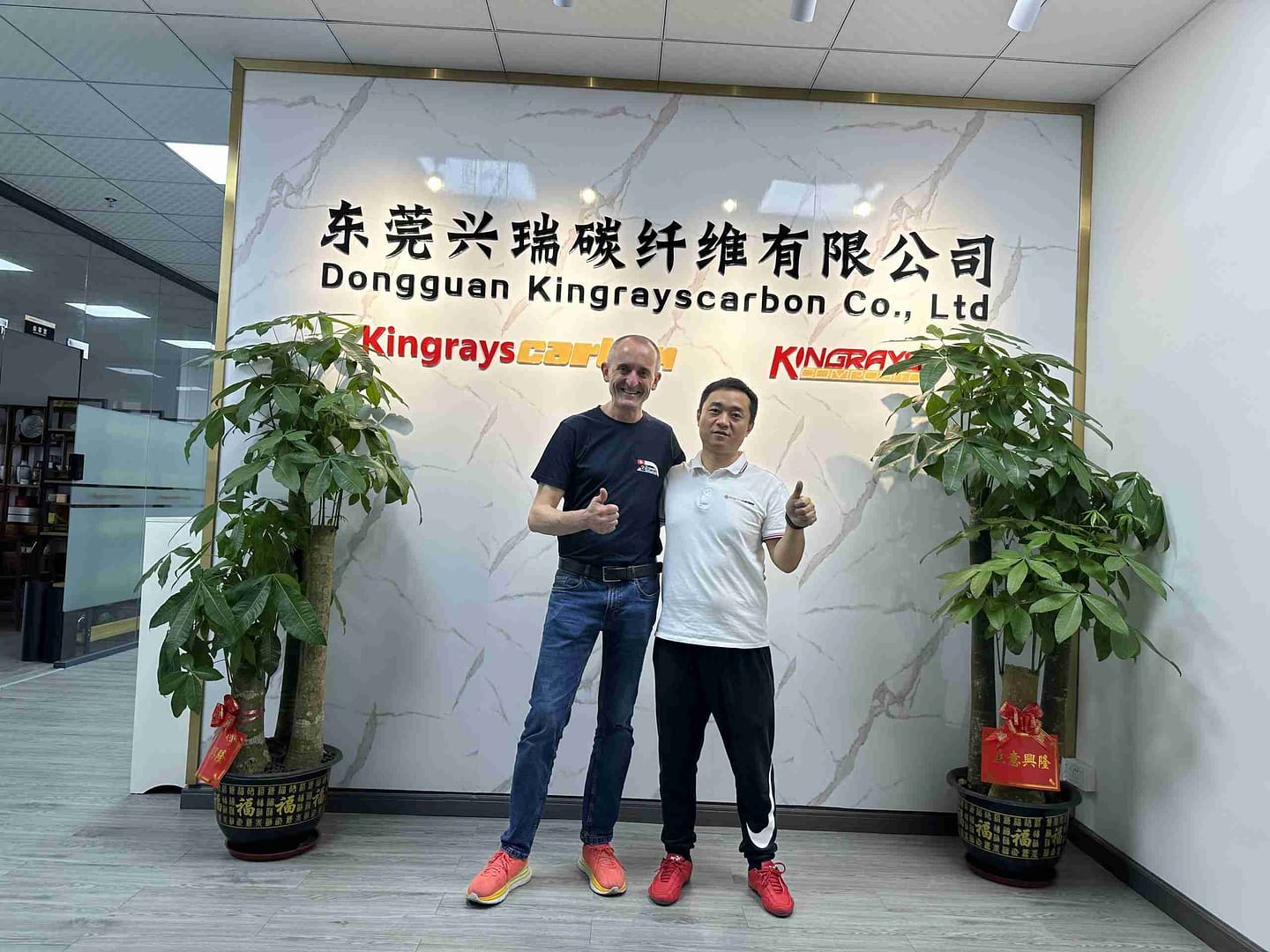
These composite tubes deliver a premium strength-to-mass balance, suited to rigorous uses where longevity and weight savings matter
Produced by integrating continuous carbon fibers within a polymer resin matrix, the tubes achieve superior mechanical properties
Meticulously aligned carbon fibers supply superior tensile strength and high stiffness, while lightweight resin lowers total mass
This fusion of mechanical advantages supports designing components that are solid in performance and low in weight
Use cases for advanced carbon fiber tubing span aircraft, automotive, sports equipment and medical instruments
In aerospace applications, carbon fiber tubes lower fuselage and wing mass, enhancing fuel savings and flight performance
Vehicle manufacturers use carbon fiber tubing for suspension links and chassis bracing to achieve better handling and lighter vehicles
Carbon Fiber Square Tubes: Precision-engineered sections for structural integrity
In applications demanding low mass and strong structural behavior, carbon fiber square tubes are increasingly favored by engineers
Precision fabrication produces square tubes with strong mechanics and versatile integration across different design requirements
Formed by aligning carbon fibers and consolidating them with a structural resin, these square tubes present strong resistance to compression and tension loads
The inherent rigidity of square carbon fiber tubes supports dependable performance in structural integrity applications
In aerospace, automotive and specialized sports uses, square carbon fiber tubes provide dependable performance under extreme demands
Moreover, the low mass of these tubes aids in improving fuel consumption and optimizing system efficiency
- In addition, tight dimensional tolerances simplify integration into complex systems and reduce adjustment-related costs
- So, square carbon fiber tubes are now central to industries seeking innovative, efficient, high-performance solutions
Rectangular carbon fiber tubes tailored for optimized performance and custom shapes
This composite offers outstanding strength per unit weight and stiffness, ideal for rigorous engineering applications
These rectangular or prismatic profiles produce optimized mechanical behavior and excellent performance outcomes
Custom production enables rectangular carbon fiber tubes to meet exact structural and load-bearing specifications
Across aviation, athletic equipment and industrial machinery, producers can fabricate precisely engineered rectangular carbon fiber tubing to your needs
This capability supports innovative engineering that increases performance while improving functional outcomes
Carbon fiber plates offering unmatched stiffness and high impact resistance
The plates’ notable stiffness makes them appropriate where high load capacity is required
Using carbon fibers in a polymer matrix yields plates with outstanding bend resistance and dimensional stability
The toughness and impact resistance of these plates come from the fibers’ capability to endure and dissipate impact energy
Integrated carbon fiber tube-and-plate composites engineered for advanced mechanical performance
Carbon fiber plates and tubes are selected in advanced materials engineering for their remarkable mechanical traits and lightness
The lightweight but tough nature of carbon fiber composites enables adoption across aerospace, automotive, sports and niche consumer sectors
Manufacturing techniques allow these composites to be formed into complex parts that retain high stiffness and long-term durability
Advances in manufacturing technology have reduced costs and improved scalability, accelerating adoption across sectors
Using carbon fiber composite parts results in stronger, lighter designs compared with many standard materials
Corrosion- and fatigue-resistant properties extend operational life and reliability for carbon fiber components in harsh environments
The unique performance of carbon fiber composites advances material science and shapes emerging engineering solutions
Delving into practical implementations and applications of carbon fiber tubes and plates
Carbon fiber composite tubes and plates demonstrate robustness and have become highly recognized across many fields
The high strength-to-weight and mechanical traits support application across a wide spectrum of needs
Applications commonly include aerospace, automotive and construction where structural integrity and durability are essential
Sporting applications leverage these materials for frames and gear such as bikes and clubs to increase performance and reduce weight
In healthcare carbon fiber tubes and plates are used for prostheses, surgical equipment and assistive medical devices
Mass reduction approaches leveraging carbon fiber tubes, plates and advanced composites
The use of carbon fiber composites makes it possible to reduce mass significantly while keeping high mechanical performance
Tubes are commonly used where high stiffness and low mass are priorities, for example bicycle frames and wind turbine blades
Carbon fiber plates offer structural stiffness and impact resilience for aircraft and spacecraft components needing stable load-bearing performance
Scientific progress unleashing broader potential of carbon fiber materials
Carbon fiber stands as a material breakthrough renowned for exceptional strength and toughness
Its remarkable performance derives from thin fibers embedded in a polymer matrix, creating a blend of lightness and strength
Use cases expand in aviation and automotive industries as weight savings contribute to better fuel economy and performance
Automotive adoption of carbon fiber results in lighter, stronger parts that contribute to improved driving dynamics and crashworthiness
The adaptability of carbon fiber structures applies across aerospace, automotive and diverse engineering areas
The composite materials’ favorable strength-to-weight ratios have changed how aerospace and automotive structures are designed
Using lightweight composites results in vehicles and aircraft that are both high-performing and fuel-efficient while remaining durable
Automotive integration ranges from body panels and chassis components to structural sections where carbon fiber reduces weight and raises handling capabilities
Carbon fiber tubes and plates are at the forefront of engineering innovation
Their ability to combine high strength with low weight has reshaped engineering in many industries
These robust, light materials are adopted in aerospace, automotive and medical sectors that prioritize performance and less mass
In aviation, deploying carbon fiber components yields fuel efficiency benefits and aerodynamic performance gains
Similarly, in the automotive sector, carbon fiber application reduces weight and enhances acceleration, handling and efficiency
- Successful implementation requires knowledge of carbon fiber behavior, fabrication methods and necessary design compromises Leveraging it successfully requires a detailed understanding of material behavior, fabrication constraints and design trade-offs Proper leveraging of carbon carbon fiber sheets fiber involves understanding its performance attributes, manufacturing constraints and trade-offs in design Optimally using carbon fiber needs insight into material response, production limitations and design balance choices
- Outlook is bright for carbon fiber tubes and plates as their uses continue to expand across industries
- Sustained R&D will continue to evolve performance and open additional application pathways
- Thus, the role of carbon fiber materials in future engineering and manufacturing is expected to grow significantly
Harnessing carbon fiber for top performance: an in-depth guide
Its notable strength-per-weight and stiffness traits position carbon fiber as a leading material to drive performance improvements
This resource examines carbon fiber characteristics, common applications and practical steps for successful integration
Across automotive, aerospace, sporting and electronic applications, carbon fiber’s versatility enhances performance outcomes
Optimally using carbon fiber needs insight into material response, production limitations and design balance choices
Case studies illustrating successful carbon fiber implementations across sectors.